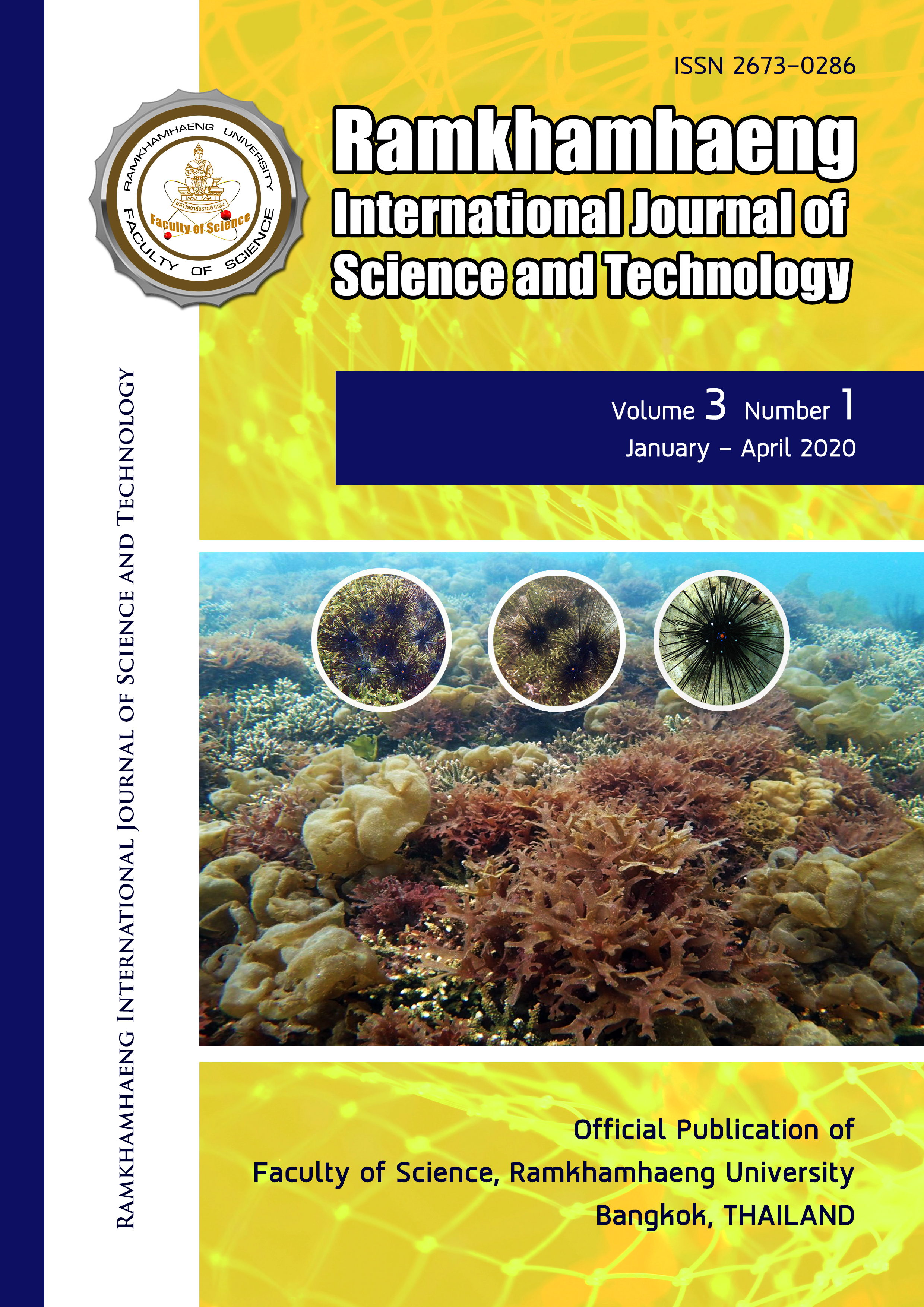Halide Recognitions of p-substituted Isophthalmide-Based Anion Receptors: Experimental and Theoretical Studies
Keywords:
Anion receptor, Isophthalamide derivatives, NMR titration, DFTAbstract
Two synthetic anion receptors, N,N’-bis-(4-fluoro-phenyl)isophthalamide, 1, and N,N’-bis-(4-chloro-phenyl)isophthalamide, 2, have been studied their structures and their anions recognitions using the experimental and computational methods. The optimized structures and thermodynamic properties have been investigated with the density functional theory (DFT) at the B3LYP/6-31G(d) level of theory. The nuclear magnetic resonance titration techniques have been also used to obtain their associate constants (Kasso) with tetrabutylammonium fluoride (TBAF), tetrabutylammonium chloride (TBACl) and tetrabutylammonium bromide (TBABr). The experimental results show agreement with the theoretical results that these receptors bind Br- selectively.
References
P. A. Gale, E. N. W. Howe, X. Wu, M. J. Spooner, Anion receptor chemistry: Highlights from 2016. Coord. Chem. Rev., 375, 333-372 (2018).
P. A. Gale, J. T. Davis, R. Quesada. Anion transport and supramolecular medicinal chemistry. Chem. Soc. Rev. 46(9), 2497-2519 (2017).
S. Camiolo, P. A. Gale, M. B. Hursthouse, M. E. Light, A. J. Shi, Solution and solid-state studies of 3,4-dichloro-2,5-diamidopyrroles: formation of an unusual anionic narcissistic dimer. Chem. Commun. 758-759 (2002).
P. A. Gale, K. Navakhun, S. Camiolo, M. E. Light, M. B. Hursthouse, Anion-anion assembly: a new class of anionic supramolecular polymer containing 3,4-dichloro-2,5-diamido-substituted pyrrole anion dimers. J. Am. Chem. Soc. 124, 11228-11229 (2002).
K Kavallieratos, S. R. de Gala, D. J. Austin, R. H. A. Crabtree, readily available non-preorganized neutral acyclic halide receptor with an unusual nonplanar binding conformation. J. Am. Chem. Soc. 119, 2325-2326 (1997).
Y. H. Kim, J. Calabrese, C. McEwen, CaCl- or Ca2Cl4 Complexing cyclic aromatic amide. template effect on cyclization. J. Am. Chem. Soc. 118, 1545-1546 (1996).
S. J. Coles, J. G. Frey, P. A. Gale, M. B. Hursthouse, M. E. Light, K. Navakhun, G. L. Thomas, Anion-directed assembly: the first fluoride-directed double helix. Chem. Commun. 568-569 (2003).
M. E. Light, Gale, P. A.; Navakhun, K. N,N-Bis(3-nitrophenyl) isophthalamide tetrabutylammonium chloride. Acta Cryst. E62, o1097-o1098 (2006).
K. Navakhun, R. Sawangsri, V. Ruangpornvisuti, Syntheses of amide based anion receptors and investigation of their molecular structures using proton NMR titration and DFT methods. Mol. Struct. 1061, 32-40 (2014).
K. Navakhun, V. Ruangpornvisuti, Molecular structures of 3,4-dichloro-2,5-diamido-substituted pyrrole anion dimers, their deprotonation reactions in systems with and without fluoride ion. J. Mol. Struct.(Theochem) 772, 23-30 (2006).
K. Navakhun, V. Ruangpornvisuti, A DFT study of chloride and hydroxide anions effects on deprotonations of 3,4-dichloro-2,5-diamido-substituted pyrrole derivatives. J. Mol. Struct.(Theochem) 806, 145-153 (2007).
K. Navakhun, V. Ruangpornvisuti, Anion binding of 3,4-dichloro-2,5-diamidopyrrole and anionic self-assembly dimerization of its deprotonated species. J. Mol. Struct.(Theochem) 864, 26-30 (2008).
K. Navakhun, V. Ruangpornvisuti, Non-rigid bis-(2,5-diamidopyrrole) receptor, its deprotonated species and their complexes with fluoride, chloride and hydroxide ions. J. Mol. Struct.(Theochem) 907, 131-134 (2009).
M. J. Frisch, et al. Gaussian 09, Revision B.01, Gaussian, Inc., Wallingford CT (2009).
M. J. Hynes, A computer program for the calculation of stability constants from nuclear magnetic resonance chemical shift data. J. Chem. Soc., Dalton Trans. 311-312 (1993).
Downloads
Published
Issue
Section
License
Copyright Notice: a copyright on any article in the published journal is retained by the Ramkhamhaeng International Journal of Science and Technology. Readers or Users grant the right to use of the Article contained in the Content in accordance with the Creative Commons CC BY-NC-ND license and the Data contained in the Content in accordance with the Creative Commons CC BY-NC-ND.



